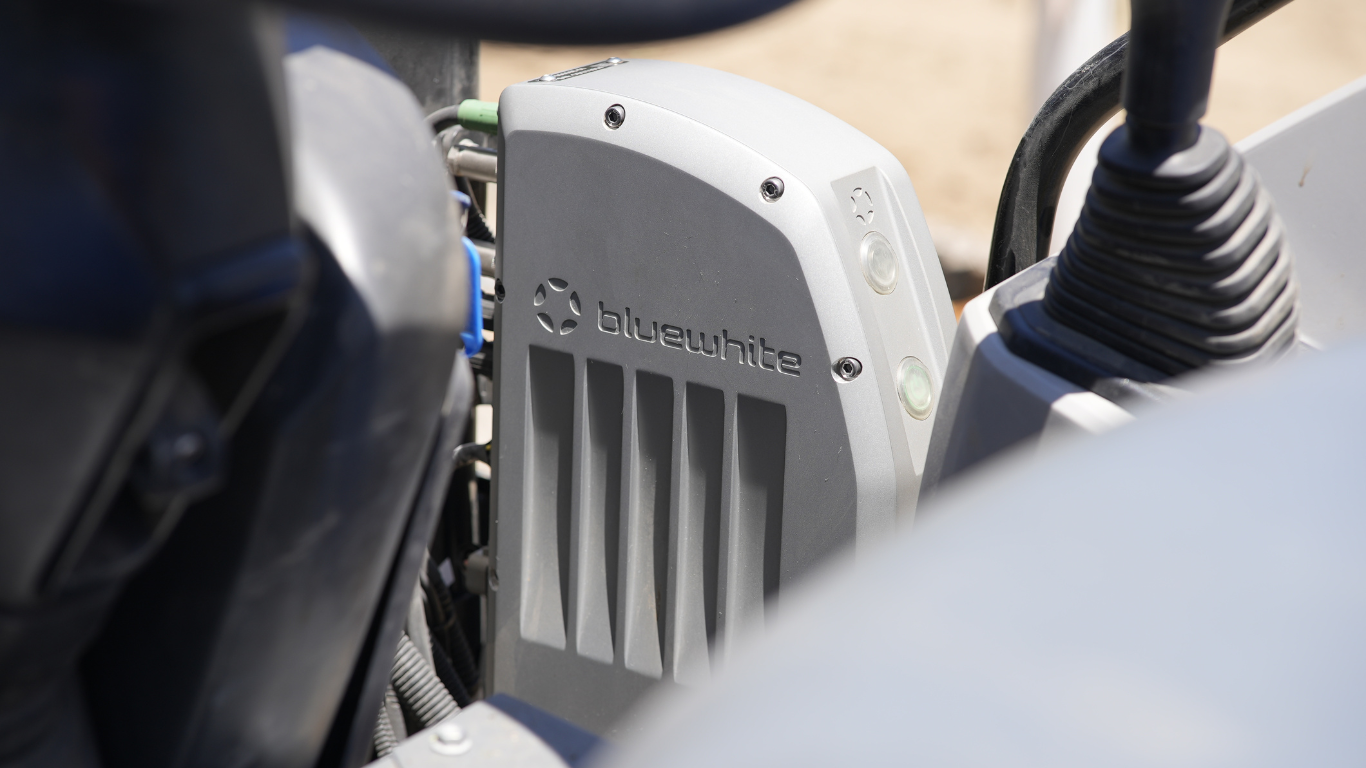Introduction: Farming’s Next Leap Forward
Agriculture has always evolved through innovation, from the plow to the tractor, from irrigation systems to GPS-guided machinery. The next leap is already underway: autonomous farming technology. These systems are transforming how growers operate, using artificial intelligence, advanced sensors, and machine learning to handle critical fieldwork with minimal human intervention.
For growers, the promise is compelling: greater efficiency, less labor dependency, more consistent results, and a lighter environmental footprint. This guide breaks down what autonomous farming technology is, how it works, and how Bluewhite is leading the way.
What Is Autonomous Farming Technology?
Autonomous farming technology refers to agricultural equipment and systems that can operate without constant human control.
These solutions range from retrofit kits that turn existing tractors into self-driving machines, to fully autonomous spraying and monitoring systems.
Core elements include:
- AI-driven decision making – Algorithms analyze field data and adapt operations in real time.
- Sensor fusion – LiDAR, cameras, GPS, and radar combine to create a detailed understanding of the environment.
- Precision control – Tasks like spraying or spreading are done with exact coverage, minimizing waste.
Key Components of Autonomous Farming Technology
1. Sensors and Perception Systems
Sensors are the "eyes" and "ears" of an autonomous system. They detect rows, obstacles, and environmental conditions.
- LiDAR: Measures distances and maps the environment in 3D.
- Cameras: Capture visual information for monitoring and navigation.
- Ultrasonic Sensors: Assist in close-range detection.
2. GPS and RTK Navigation
Global Positioning Systems (GPS) with Real-Time Kinematic (RTK) correction deliver centimeter-level accuracy, ensuring machines follow the most efficient paths.
3. Artificial Intelligence and Machine Learning
AI models process data from sensors, adjusting routes and actions in real time, such as altering spray patterns based on plant spacing and canopy structure.
4. Control and Drive Systems
High-precision motors, hydraulics, and controllers execute the AI’s decisions, moving equipment with exact speed and positioning.
The Benefits for Growers
Autonomous farming technology is not just about replacing a driver. It’s about increasing operational productivity, lowering input costs, and improving sustainability.
Efficiency and Productivity
- Machines can work longer hours without fatigue.
- Multiple tasks can be managed simultaneously across fields.
Labor Savings
- Significantly reduces the dependency on seasonal labor.
- Frees up skilled workers for other essential tasks.
Sustainability
- Optimized spraying and spreading reduce chemical usage.
- Precise operations lower fuel consumption and environmental impact.
Cost Reduction
- Faster payback due to reduced labor and input costs.
- Less downtime thanks to predictive maintenance capabilities.
Common Misconceptions About Autonomous Farming
"It’s too expensive for smaller farms"
Retrofit solutions like Bluewhite’s Pathfinder kit allow growers to upgrade existing equipment rather than buy new machines, making autonomy more accessible.
"Autonomous means fully driverless at all times"
Most systems still allow manual control and supervised modes for flexibility.
"It’s too complex to maintain"
Modern autonomy platforms are designed with intuitive interfaces, remote diagnostics, and dedicated support services.
Bluewhite: Leading the Next Generation of Farm Autonomy
Bluewhite combines cutting-edge hardware and advanced software to deliver autonomy that is practical, scalable, and reliable for real-world farm conditions.
GEN 4 Autonomous Farming System
Powered by NVIDIA AGX Orin, the GEN 4 platform integrates LiDAR, cameras, and AI perception for real-time navigation and precise task execution.
Pathfinder Retrofit Kit
Transforms your existing tractor into a fully autonomous machine without replacing the equipment you already trust.
Compass Fleet Management Software
Gives growers real-time visibility and control over all autonomous operations from a single dashboard.
Future Trends in Autonomous Agriculture
- Integration with Drone Technology – Combining ground and aerial data for enhanced decision-making.
- Predictive AI Maintenance – Systems that anticipate and prevent equipment downtime.
- Climate-Adaptive Farming – AI adjusting practices based on weather and soil conditions in real time.
FAQs: Autonomous Farming Technology
Q: Can I retrofit my current tractor for autonomy?
Yes. Solutions like Bluewhite’s Pathfinder Kit are designed specifically for retrofitting.
Q: How accurate are autonomous systems?
With RTK GPS, they can achieve centimeter-level precision.
Q: What tasks can be automated today?
Spraying, chemical spreading, and other repetitive fieldwork are already proven autonomous applications.
Conclusion and Next Steps
Autonomous farming technology is no longer a concept. It is delivering measurable results for growers across the globe. Whether your goal is lowering labor costs, improving operational efficiency, or reducing environmental impact, the right autonomy solution can transform your operation.
Bluewhite is here to help you make that transformation — starting today.

